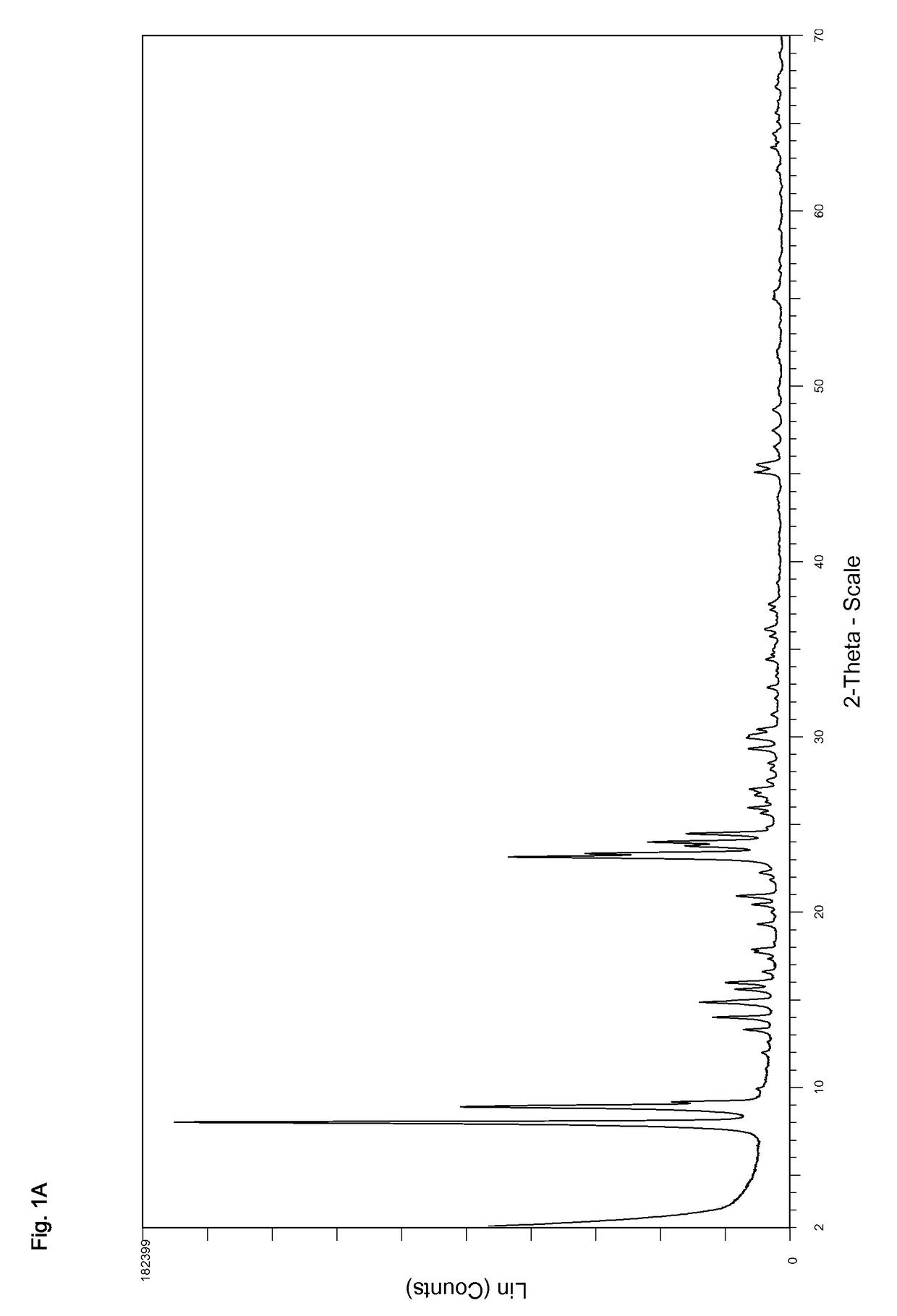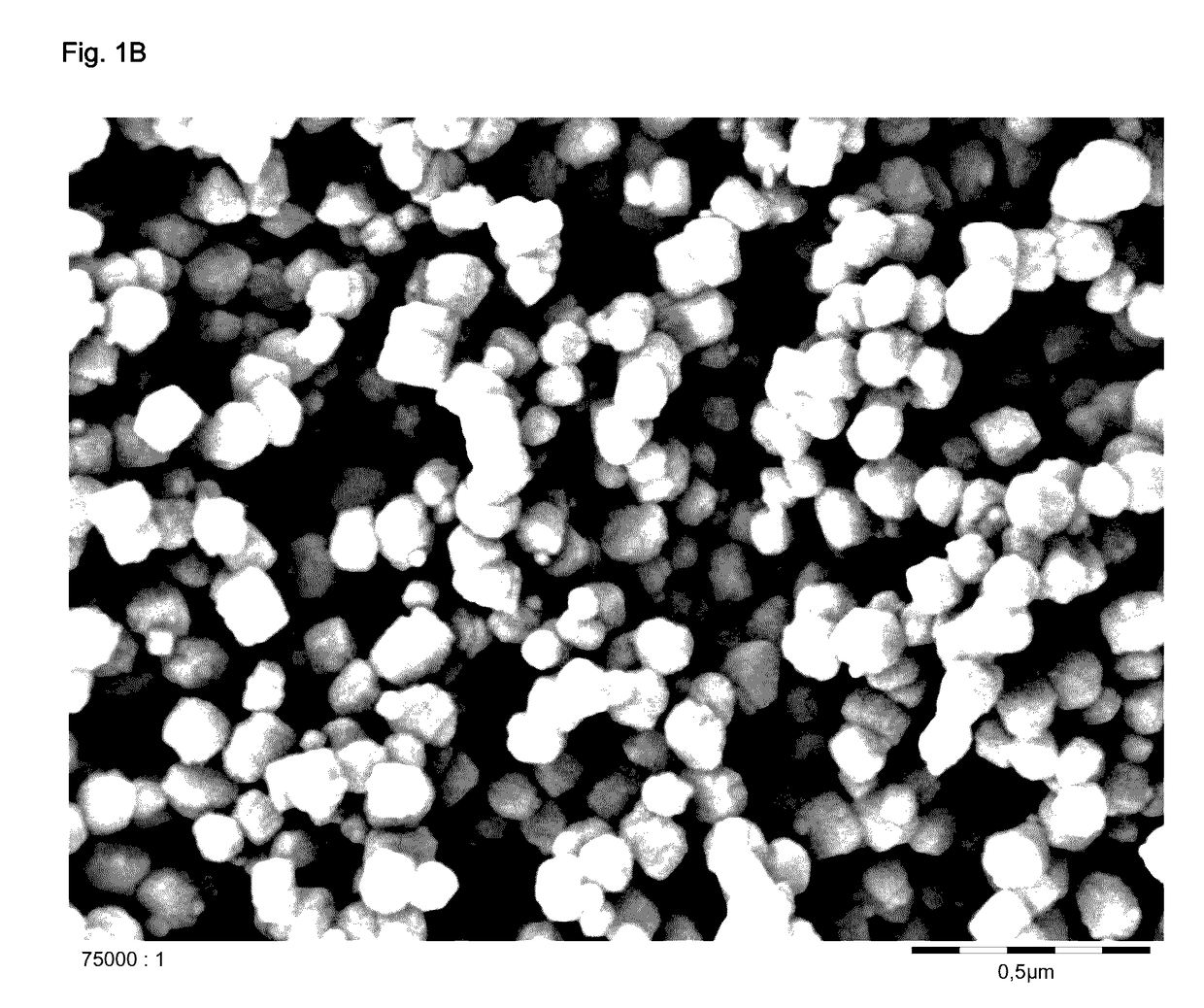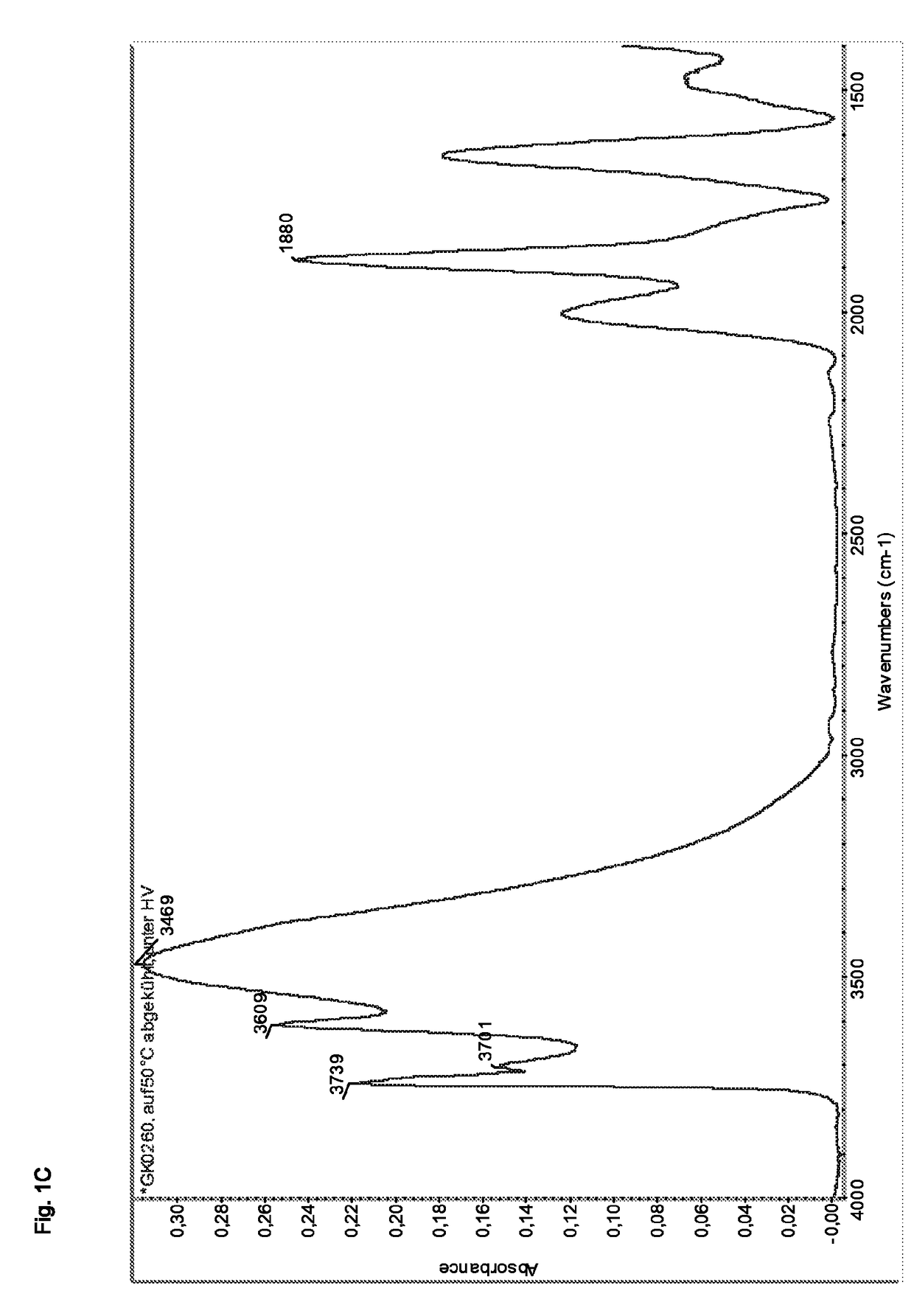Process for the conversion of oxygenates to olefins
a technology of oxygenates and olefins, applied in the field of improvement, can solve the problems of increasing overall production costs and consuming energy
- Summary
- Abstract
- Description
- Claims
- Application Information
AI Technical Summary
Benefits of technology
Problems solved by technology
Method used
Image
Examples
reference example 1
Synthesis of ZSM-5 Zeolite at an SiO2:Al2O3 Molar Ratio of 100
[0250]Tetraethylorthosilicate (757 g) was stirred in a four-necked flask. Water (470 g) and tetrapropylammonium hydroxide (40 wt % in water, 366 g) were added. The mixture was stirred for 60 minutes during which the temperature rose to 60° C. This was due to the hydrolysis of tetraethyllorthosilicate resulting in the formation of ethanol. The ethanol was removed via distillation until a sump temperature of 95° C. was reached. Thereby 817 g of ethanol were removed from the mixture. The mixture was then allowed to cool to 40° C. while stirring, 817 g of water were added and the resulting gel was filled into an autoclave. A solution of aluminum sulfate octadecahydrate (24.2 g) and water (40 g) were added to the autoclave. The autoclave was closed and heated to 170° C.
[0251]After stirring the gel at 170° C. for 48 h the autoclave was cooled to ambient temperature and the mixture was removed. It was treated with nitric acid (1...
reference example 2
Synthesis of ZSM-5 Zeolite at an SiO2:Al2O3 Molar Ratio of 250
[0262]Tetraethylorthosilicate (757 kg) was stirred in a vessel. Water (470 kg) and tetrapropylammonium hydroxide (40 wt % in water, 333 kg) were added. The mixture was stirred for 60 minutes during which the temperature rose to 60° C. This was due to the hydrolysis of tetraethylorthosilicate resulting in the formation of ethanol. The ethanol was removed via distillation until a sump temperature of 95° C. was reached. Thereby 832 kg of ethanol were removed from the mixture. 832 kg of water and a solution of aluminum sulfate octadecahydrate (9.4 kg) and water (20 kg) were added to the vessel. The vessel was closed and heated to 150° C.
[0263]After stirring the gel at 150° C. for 24 h the autoclave was cooled to ambient temperature and the mixture was removed. It was treated with nitric acid (10 wt % in water) until a pH value of 7.1 was reached. The resulting suspension was filtered. The filter cake was washed with water and...
reference example 3
Synthesis of ZSM-5 Zeolite at an SiO2:Al2O3 Molar Ratio of 320
[0273]Tetraethylorthosilicate (757 g) was stirred in a four-necked flask. Water (470 g) and tetrapropylammonium hydroxide (40 wt % in water, 333 g) were added. The mixture was stirred for 60 minutes during which the temperature rose to 60° C. This was due to the hydrolysis of tetraethyllorthosilicate resulting in the formation of ethanol. The ethanol was removed via distillation until a sump temperature of 95° C. was reached. Thereby 805 g of ethanol were removed from the mixture. The mixture was then allowed to cool to 40° C. while stirring, 805 g of water were added and the resulting gel was filled into an autoclave. A solution of aluminum sulfate octadecahydrate (7.6 g) and water (25 g) were added to the autoclave. The autoclave was closed and heated to 170° C.
[0274]After stirring the gel at 170° C. for 24 h the autoclave was cooled to ambient temperature and the mixture was removed. It was treated with nitric acid (10...
PUM
| Property | Measurement | Unit |
|---|---|---|
| pressure | aaaaa | aaaaa |
| temperature | aaaaa | aaaaa |
| diameter | aaaaa | aaaaa |
Abstract
Description
Claims
Application Information
 Login to View More
Login to View More - Generate Ideas
- Intellectual Property
- Life Sciences
- Materials
- Tech Scout
- Unparalleled Data Quality
- Higher Quality Content
- 60% Fewer Hallucinations
Browse by: Latest US Patents, China's latest patents, Technical Efficacy Thesaurus, Application Domain, Technology Topic, Popular Technical Reports.
© 2025 PatSnap. All rights reserved.Legal|Privacy policy|Modern Slavery Act Transparency Statement|Sitemap|About US| Contact US: help@patsnap.com



